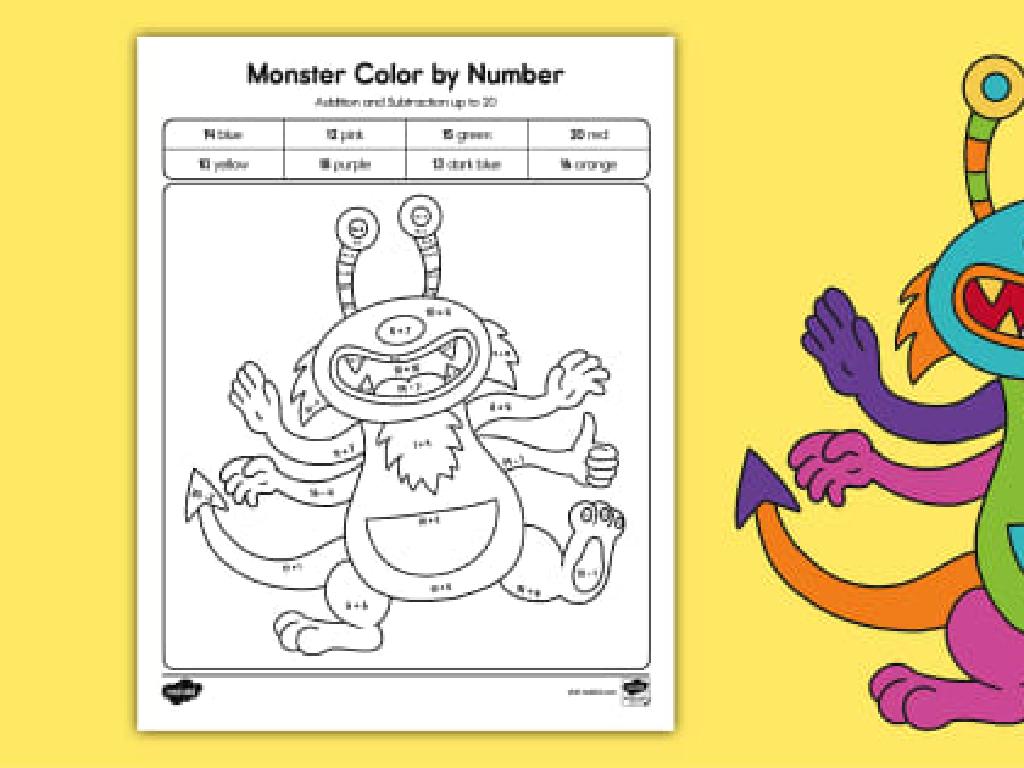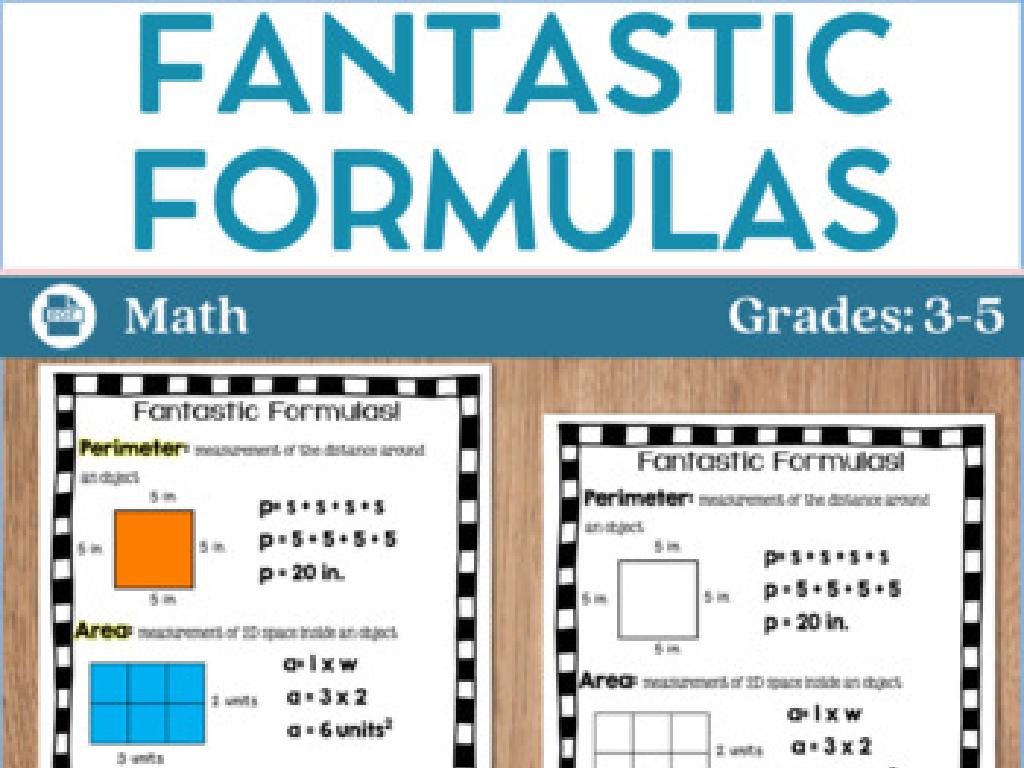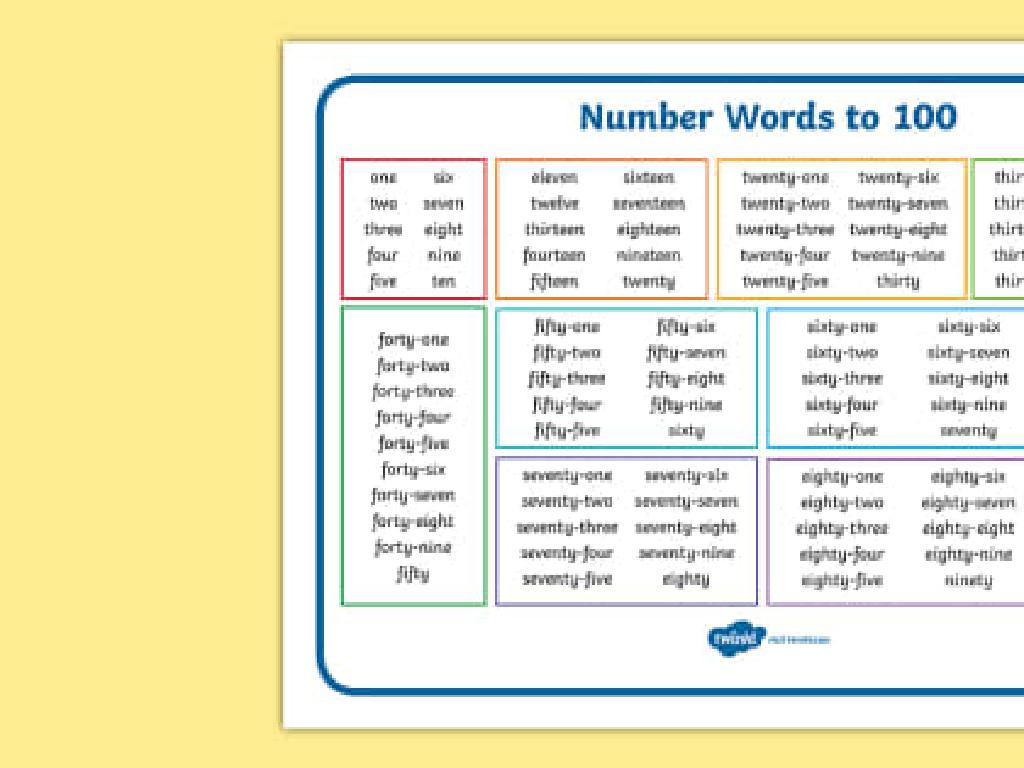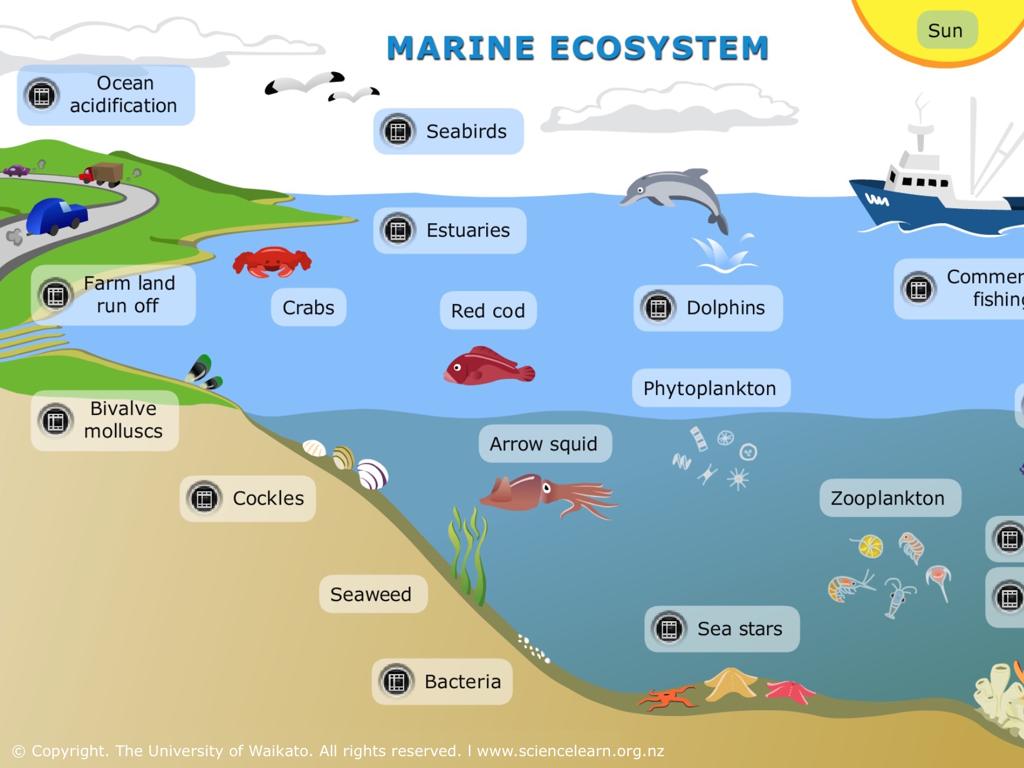Read About Famous Places
Subject: Language arts
Grade: Second grade
Topic: Read About Animals
Please LOG IN to download the presentation. Access is available to registered users only.
View More Content
Exploring Famous Places Through Reading
– Today’s adventure in reading
– Explore the world in books
– Travel to landmarks like the Eiffel Tower or Great Wall without leaving home
– Learning about different places
– Discover cultures, history, and geography from around the world
– Importance of global awareness
– Understanding diversity and gaining a broader perspective on life
|
This slide introduces the concept of exploring the world by reading about famous places, which is an exciting adventure for second graders. It’s important to emphasize the value of learning about different places as it helps students understand and appreciate diverse cultures and histories. By exploring books on famous landmarks and destinations, students can virtually travel and gain knowledge about the world beyond their immediate environment. This contributes to their global awareness and helps them develop a more inclusive worldview. Encourage students to share places they’ve read about or would like to visit, fostering an interactive and engaging learning experience.
Exploring Famous Places Around the World
– What makes a place famous?
– Landmarks known globally for unique reasons
– Examples of famous landmarks
– Pyramids of Giza, Grand Canyon, Taj Mahal
– Why are these places special?
– They have historical, aesthetic, or cultural importance
– Discovering history and culture
|
This slide introduces second-grade students to the concept of famous places, which are landmarks recognized internationally. Start by discussing what can make a place famous, such as its history, beauty, or cultural significance. Provide examples like the Pyramids of Giza for their historical importance, the Grand Canyon for its natural beauty, and the Taj Mahal for its cultural significance. Explain that these places help us learn about different parts of the world and the people who live or lived there. Encourage students to think of any famous places they know and what makes them special. This will help them connect the idea of famous places to their prior knowledge and experiences.
Reading Time: The Statue of Liberty
– Read a story about visiting the Statue
– Listen for Statue details
– Location, appearance, and fame
– Think why the Statue is special
– What makes the Statue unique?
– Reflect on its meaning to you
– Does the Statue remind you of freedom or a trip?
|
This slide is meant to guide the reading session where students will learn about the Statue of Liberty through a story. Encourage active listening by asking students to pay attention to specific details such as where the Statue is, what it looks like, and why it is a famous landmark. Prompt them to think about the Statue’s significance and what it might personally mean to them. This could be related to themes of freedom, history, or even a memory of a family trip. After reading, facilitate a discussion where students can share their thoughts and feelings about the Statue of Liberty.
Vocabulary Building: Famous Places
– Learn new words about places
– Monument, Landmark, Culture, Attraction
– Match words to place pictures
– Connect ‘Monument’ with a picture of the Statue of Liberty
– Use words in sentences
– ‘The Eiffel Tower is a landmark in Paris.’
– Discuss the meaning of each word
|
This slide aims to expand the students’ vocabulary with words related to famous places. Introduce each word and its definition: Monument (a structure built to remember an important event or person), Landmark (an object or feature that is easily seen and recognized), Culture (the beliefs, customs, arts, etc., of a particular society), and Attraction (a place that draws visitors by providing something of interest or pleasure). Have pictures of famous places ready and ask students to match the new vocabulary words with the correct pictures. Then, guide them to use each word in a sentence, which will help solidify their understanding of the words’ meanings and contexts. Encourage students to think of famous places they know or have visited to make the activity more engaging and personal.
Describing Famous Places
– Learn to describe a place
– Discuss size, color, location, and why it’s important
– Practice with a partner
– Pick a famous place and describe it together
– Share with the class
– Take turns telling the class about your place
– Understand places’ significance
– Why is this place special or famous?
|
This slide is aimed at helping second-grade students learn how to describe famous places using key attributes such as size, color, location, and importance. Start by explaining each attribute with examples. Then, pair students up to practice describing a famous place of their choice, encouraging them to use the attributes discussed. Afterward, each pair will share their description with the class, fostering public speaking skills. Emphasize the importance of understanding why certain places are famous, which can include historical, cultural, or natural significance. This activity will enhance their descriptive language skills and geographical awareness.
Show and Tell: Famous Places
– Bring a picture of a famous place
– Explain why it’s your favorite
– Is it because of its beauty, history, or a story you heard?
– Share what you want to learn more
– Maybe about its history, people, or any special events?
– Listen to friends’ favorite places
|
This activity is designed to engage students with geography and landmarks while integrating personal experiences and storytelling. Encourage students to bring a picture or drawing of a place they find fascinating. It could be a place they’ve visited, seen in a book, or heard about from stories. Prompt them to think about why they like it: is it the place’s beauty, its history, or a personal connection? Ask what more they wish to learn about it, fostering curiosity and research skills. During the presentation, students will practice public speaking and active listening as they hear about diverse places from their peers. Provide a supportive atmosphere for sharing and learning.
Class Activity: Create Your Own Landmark
– Craft a model of a famous place
– Work together in groups
– Present your landmark to the class
– Discuss your landmark’s significance
– Why is it special or famous? Think about history or fun facts!
|
In this engaging class activity, students will use craft materials to build a model of a famous landmark. They will work in small groups to foster teamwork and collaboration. Once the models are complete, each group will present their landmark to the class, explaining the significance of the place they chose. Teachers should prepare a variety of craft materials and provide examples of famous landmarks to inspire the students. Possible activities could include building the Eiffel Tower, the Great Wall of China, or the Statue of Liberty. Encourage students to discuss what makes their landmark special, such as its history, architecture, or cultural importance. This activity combines creativity with learning, helping students to better remember the landmarks and their significance.
Exploring the World Through Reading
– Recap on famous places
– We learned about the Eiffel Tower, Great Wall of China, and more.
– Reading as a global adventure
– Books are like magic carpets, taking us to faraway places.
– Homework: Dream destination paragraph
– Write about a famous place you dream of visiting and why.
|
As we conclude our journey on famous places, remind the students of the landmarks we’ve discussed, such as the Eiffel Tower, the Great Wall of China, and others. Emphasize how reading can transport us to different parts of the world, allowing us to embark on adventures from the comfort of our classroom or home. For homework, instruct the students to write a short paragraph about a famous place they would like to visit, encouraging them to think about what makes that place special and why they want to go there. This exercise will help them practice their writing skills and use their imagination to explore new destinations.






